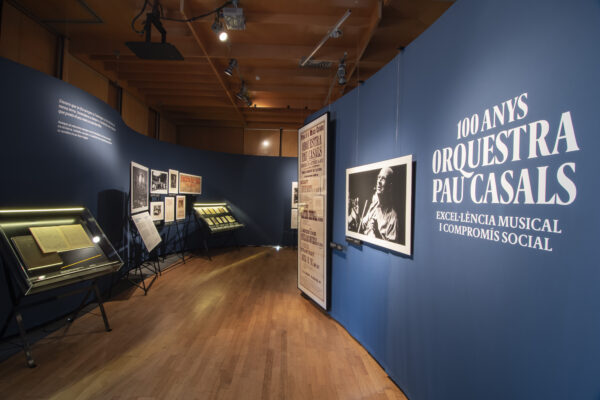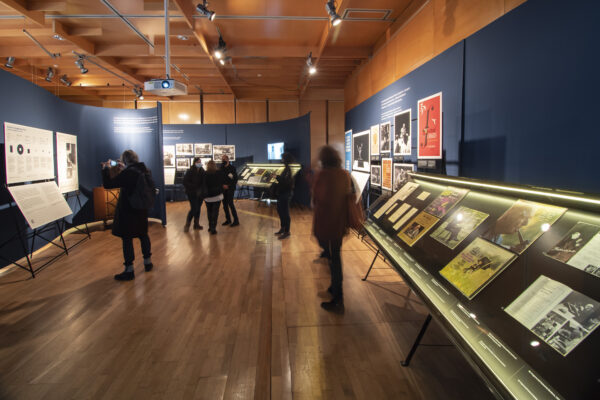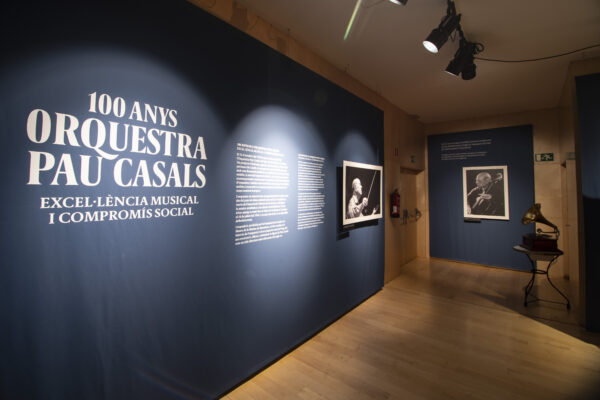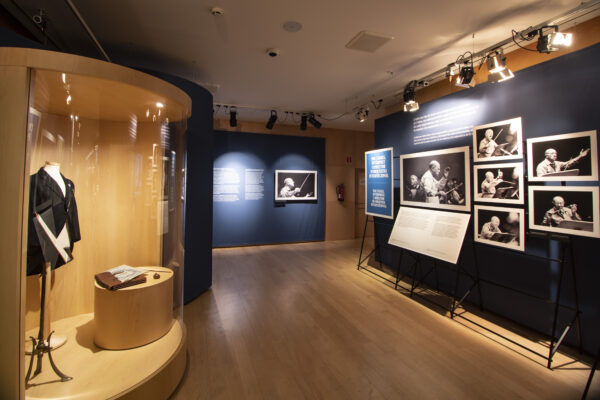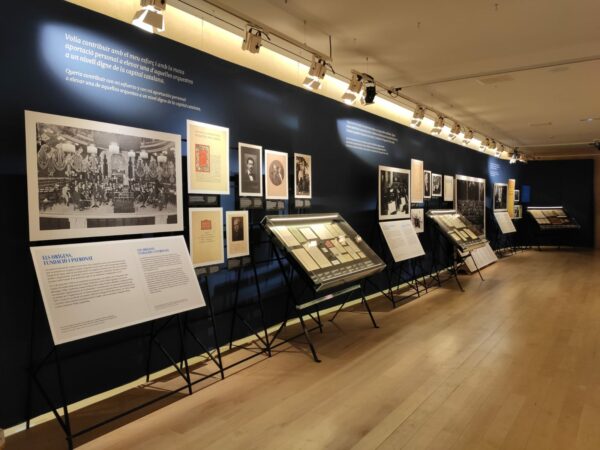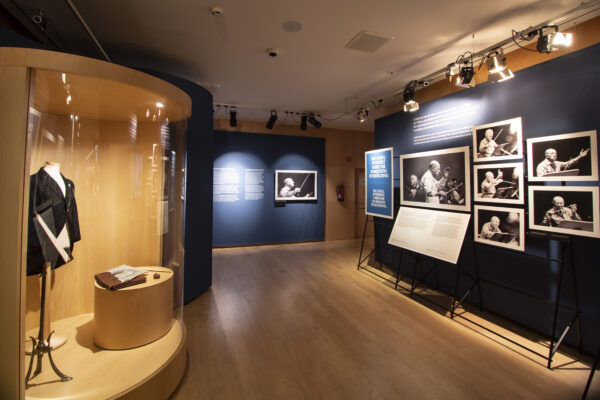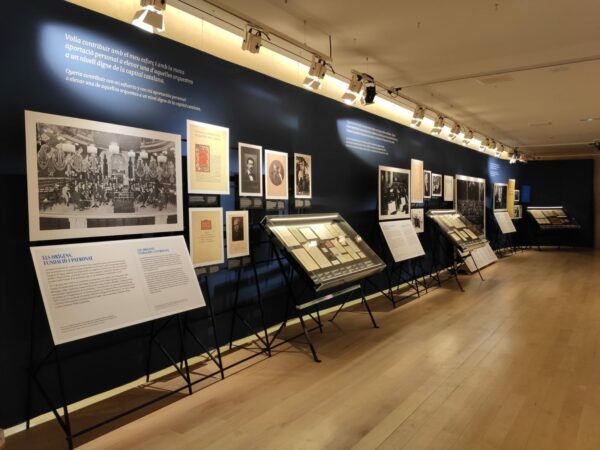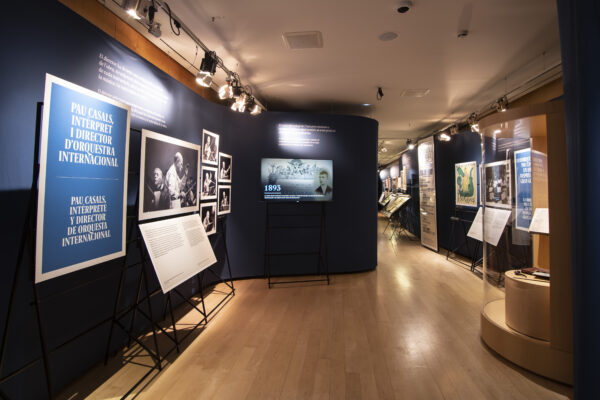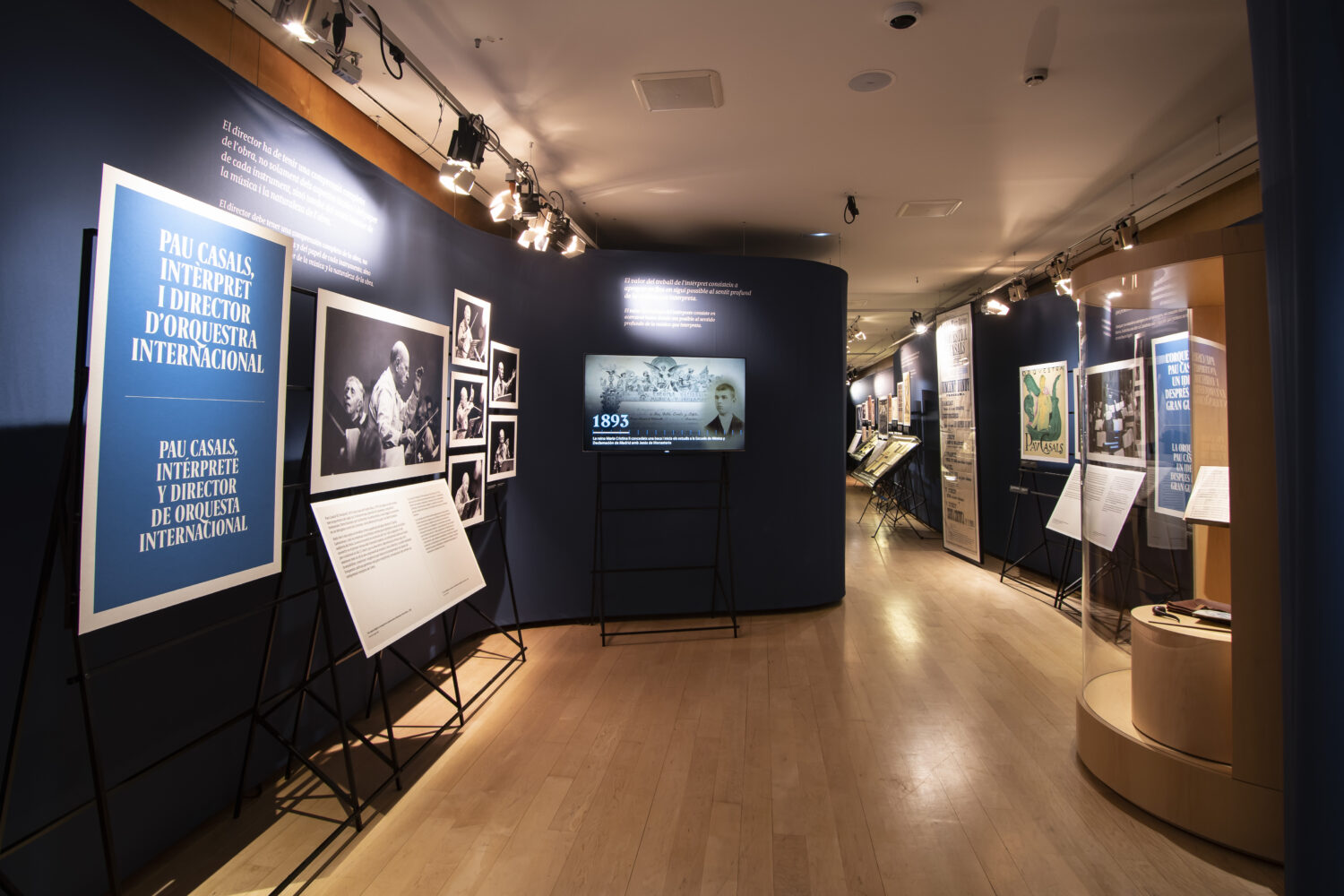
The exhibition is a joint production between the Pau Casals Foundation and the Barcelona Music Museum. It tells the story of the Orchestra Pau Casals and at the same time celebrates Pablo Casals as one of the greatest orchestra conductors of the 20th century. The exhibit traces the musical history and impact made by the creation of the Orchestra Pau Casals in Barcelona through the many documents, concert programmes and scores that have been preserved in the Pau Casals Collection belonging to the Pau Casals Foundation, stored in the National Archive of Catalonia, and the collections held at the Library of Catalonia, the CEDOC, the Historical Archive of the G. T. del Liceu Society, the Photographic Archive of Barcelona, among others. These documents show how intensely active the orchestra was during its years of existence, and the exhibition also includes valuable audiovisual documents compiled by the Pau Casals Foundation.
Núria Ballester, director of the Pau Casals Museum, curated the exhibition together with an advisory committee made up of the director of the Music Museum, Jaume Ayats, the musicologist Bernard Meillat and the director of the Pau Casals Foundation, Jordi Pardo, with the support of the Department of Culture of the Government of Catalonia, the Tarragona Provincial Council, Acción Cultural Española and the El Vendrell Town Council.
Come help us identify Pablo Casals Orchestra’s musicians
At the exhibition “100 Years of the Orchestra Pau Casals. Musical Excellence and Social Commitment” at the Barcelona Music Museum you will find an enlarged photograph showing the members of the Orchestra Pau Casals, but not all of the musicians have been identified. If you are a researcher, music lover, musician or musician’s relative and you can identify any of the members of the orchestra, you can notify us by sending an e-mail to fundacio@paucasals.org. You can find the enlarged image in the exhibition here.
The exhibition route starts with the exhibition at the Barcelona Music Museum, which explains the history of the orchestra from its creation in 1920 to its end with the outbreak of the Spanish Civil War, which destroyed the symphonic panorama in Barcelona in the 1940s, and includes the period of the Spanish Second Republic, during which Pablo Casals and his orchestra received great acclaim. The exhibition explains and shows how the orchestra works, the repertoire with the composers, soloists and guest conductors, the career of the musicians who formed it and also its strong social commitment reflected in the promotion of the project of the Associació Obrera de Concerts. More information here.
The exhibition continues at the Pau Casals Museum, where the orchestra’s relationship with the region and the concerts that took place outside Barcelona in cities such as Figueres, Mataró, Olot, Palamós, Terrassa, Sabadell, Sant Feliu de Guíxols, Lleida, Granollers, Vic, El Masnou, El Vendrell and Vilanova i la Geltrú are explained. The homage paid to him in his hometown of El Vendrell on 10th July 1927 is also explained, with images and objects commemorating the event and a film with the oldest preserved images of Pablo Casals. Finally, Pablo Casals’ international orchestral conducting career is shown, with recordings recently recovered by the Pau Casals Foundation.
